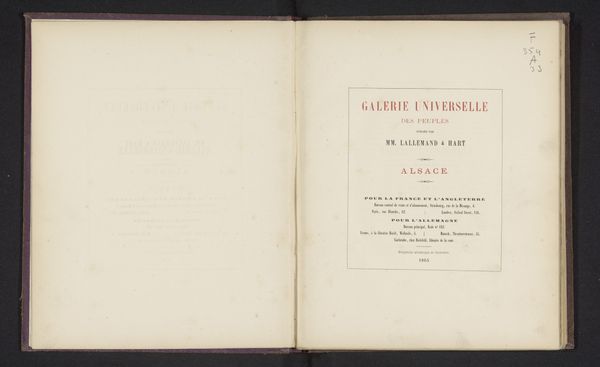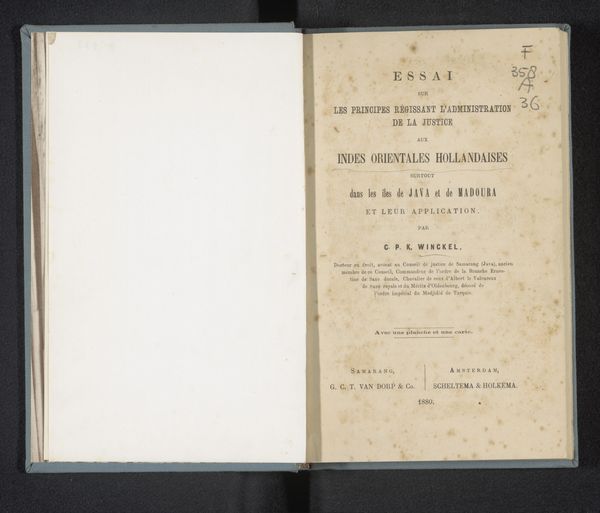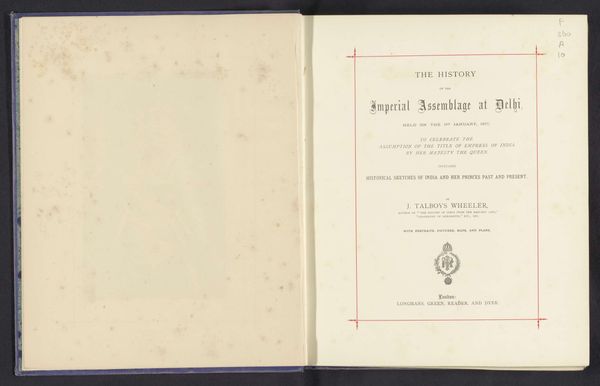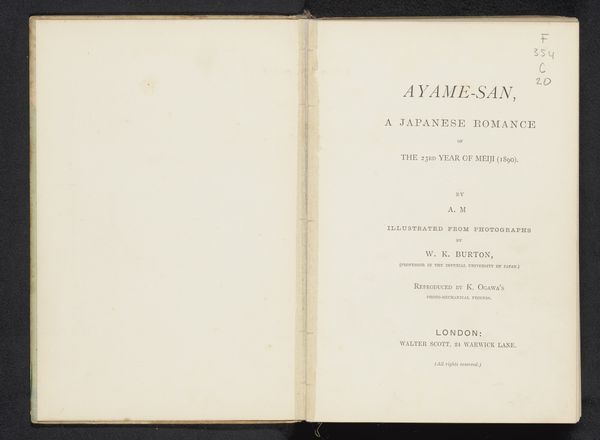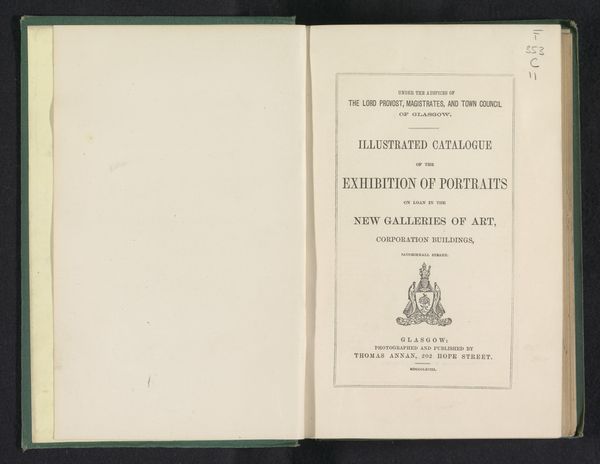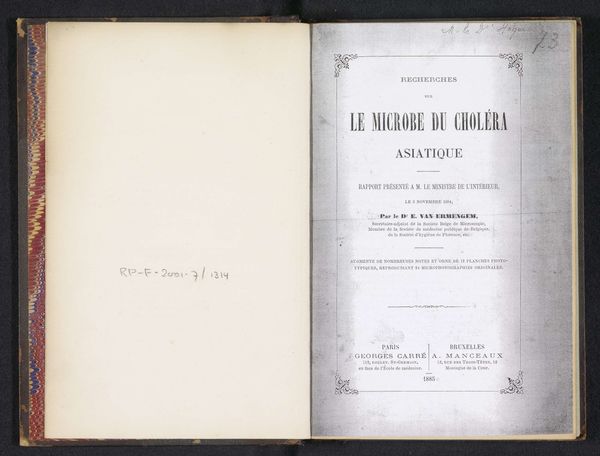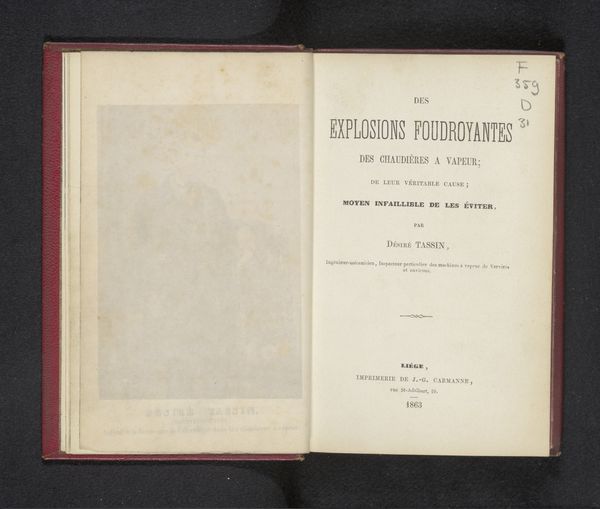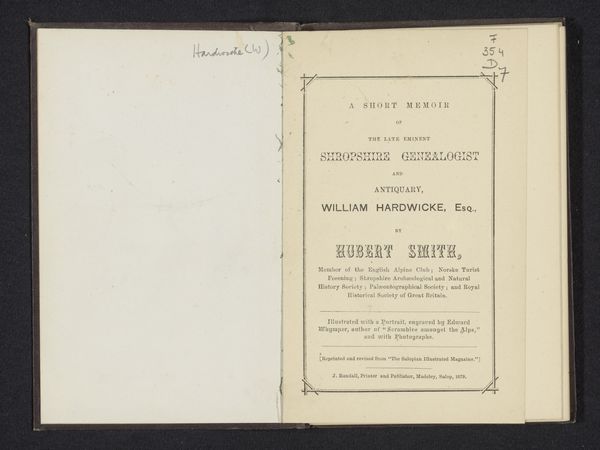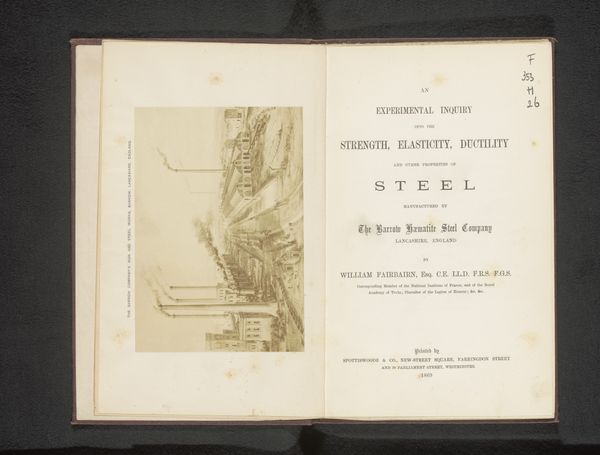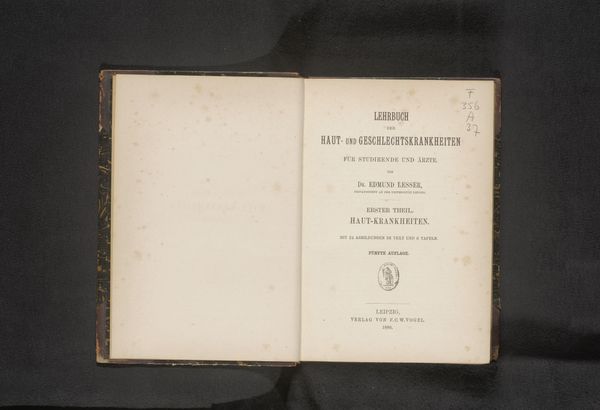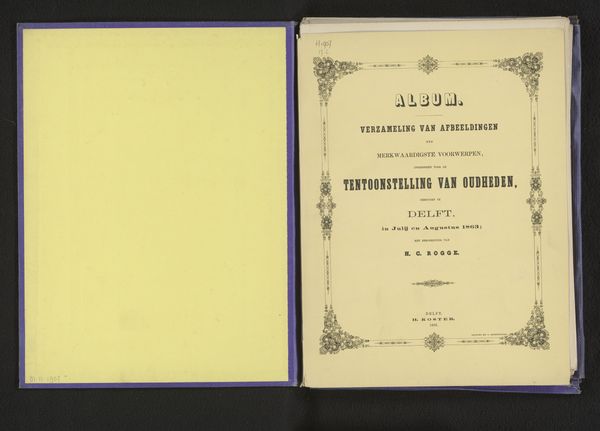
The ancient poem of Guillaume de Guileville entitled le Pelerinage de l'homme, compared with the Pilgrim's progress of John Bunyan 1858
0:00
0:00
print, paper, typography
# print
#
book
#
paper
#
typography
Dimensions: height 270 mm, width 205 mm, thickness 15 mm
Copyright: Rijks Museum: Open Domain
Curator: Here we have an intriguing printed piece: the 1858 edition of “The ancient poem of Guillaume de Guileville entitled le Pelerinage de l'homme, compared with the Pilgrim's progress of John Bunyan," published by Basil Montagu Pickering. Editor: My immediate impression is of old paper and solemn, sturdy fonts. The sort of book you imagine holding with reverence in a dimly lit library. The weight of tradition practically radiates from it! Curator: Tradition indeed! Both Guillaume de Guileville and John Bunyan explored allegorical pilgrimages of the soul. Bringing them together highlights the continuity of that symbolic journey throughout different eras and cultures. The typography is clean, classical. Editor: See, to me, the classical fonts and anchor iconography evoke a kind of hopeful seafaring – maybe setting out on that allegorical journey. Though I admit I do struggle a little to bridge the gap between the overtly religious content and its expression through visual components like this nautical emblem. How were the anchor and serpent related to spiritual evolution? Curator: In iconography, the anchor represents hope and steadfastness, which aligns beautifully with the pilgrim’s spiritual journey. The serpent twined around it is more complex—it may allude to temptation or the necessity of navigating worldly challenges. But there’s also ancient symbolism equating serpents with healing, change, or cycles of regeneration. Think Asclepius’s staff, now a medical symbol. Editor: Interesting, I hadn’t thought about the duality that serpent evokes; it suddenly turns what could be construed as simple faith and exploration into something far more treacherous. That serpent seems like the author's commentary on how hard a journey like that would actually be! A voyage fraught with metaphorical storms and monsters, no doubt. Curator: Absolutely. This visual language enhances the reading experience and underscores the themes. It serves as a cultural memory, reminding us of recurring archetypes within these types of stories and within the human experience itself. Editor: It really invites you to consider how universal these narrative themes are—personal journeys represented and reimagined across vast stretches of time. I suppose what appeared austere now just looks enduring!
Comments
No comments
Be the first to comment and join the conversation on the ultimate creative platform.

